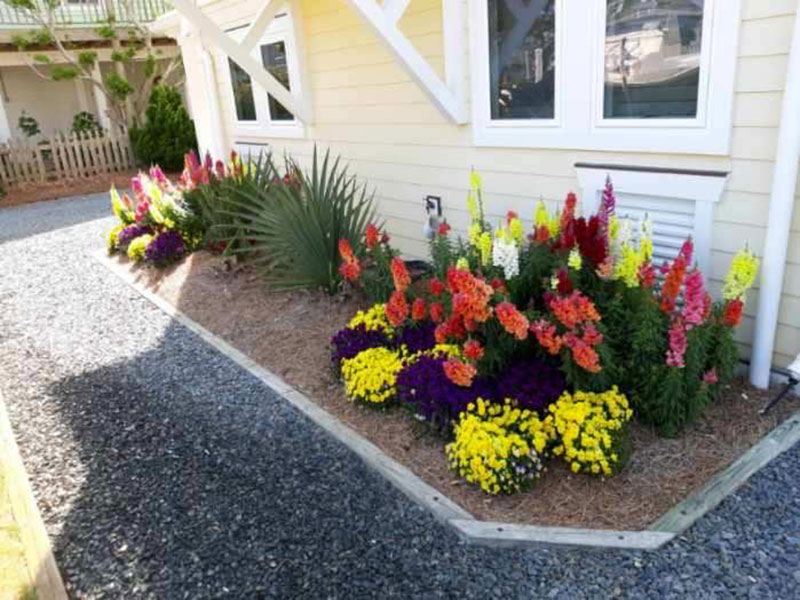Roses are some of the most popular and beautiful flowers in flower gardens all over…
The Best Time to Plant Flowers in Eastern North Carolina
Home » Landscaping Blog » The Best Time to Plant Flowers in Eastern North Carolina
When is the Best Time to Plant Flowers in Eastern NC?

We know it’s the dead of winter but, if you love flowers, you are already starting to think about what will bloom in the spring and make your yard wake up with color! You may also be wondering if it is too late to plant flowers for the spring. There is no question that winter is hard on your flowers, but if the ground is workable you can still plant some perennials. We thought it would be helpful to give you some guidance as to when is the best time to plant flowers in the eastern part of N.C. and which flowers you should look at planting when.
Once the temperatures drop below 55 degrees, anything that is already blooming will have a tough time. Pansies are a fairly tough flower that can make it through the winter, but you will still need to protect them.
Plant Hardiness Zones 7b and 8
When you are selecting plants for your garden or yard, it’s important to know your hardiness zone. The planting hardiness zone guides you in both the kinds of flowers that grow best and when to plant them. North Carolina is a big state that spans from the Atlantic Ocean in the east to the Appalachian Mountains in the west. It encompasses five planting zones because it is much warmer in the east than it is west in the mountains. The altitude makes a big difference in the planting zones as well.
We wanted to focus our article on the eastern part of North Carolina. The plant hardiness zones in the eastern part of N.C. are 7b in the area closest to the Piedmont in central N.C. and 8 in the coastal regions. Zones 7b and 8 are temperate climates that provide longer warm seasons for planting. This means you can plant later into the fall and earlier in the spring than in zones that have cold winters that last longer.
Plant Perennial Flowers from Bulbs in the Fall
It’s best to plant bulbs for perennials in the fall. The ground is still workable and warm enough to give the bulbs the perfect environment for them to take root and bloom in the spring. The bulbs store energy from the warmth in the soil and this allows them to develop a deep root system. Some of the perennial flowers are crocus, daffodils, tulips, dahlias, and hyacinths. These perennial flowers come back every year; however, each has a short period of time for blooming. For example, crocus and daffodils bloom early when the weather is still very cool, while tulips bloom later.
Sowing Seeds in the Winter
Many flowers can be started inside during the winter from seeds and then planted outside when the weather gets warm consistently. You may be surprised to find that you can also sow seeds in clear plastic containers like milk or water jugs outside. Set the containers outdoors where they are exposed to sun and rain. You will see your flowers germinate in early spring! Flowers such as zinnias, bachelor buttons, delphinium, evening primrose, and poppies will all do well in zone 8 when they are sown in the winter.
Planting Annuals in the Early Spring
Annuals bloom for months when cared for properly, so you’ll want to look at these for providing your yard with continuous color from spring through summer and into fall. You can plant annuals from fully rooted plants or from seeds. Early April may still be a bit too cool for putting rooted annuals outside, but planting the seeds works just fine. Once the nights warm up to consistently around 53 degrees Fahrenheit, that would be the best time to plant flowers. Just don’t rush because when the nights are too cool, your annuals won’t thrive.
Contact our Landscaping Experts for Help!
Call us at Get Right Enterprises for more information and to help with planting flowers. We specialize in assisting you in planting the flowers that flourish best in your environment. Call us at 910-264-6782 or fill out our contact form to get started.
Related Posts
- How to Protect Roses from Diseases




